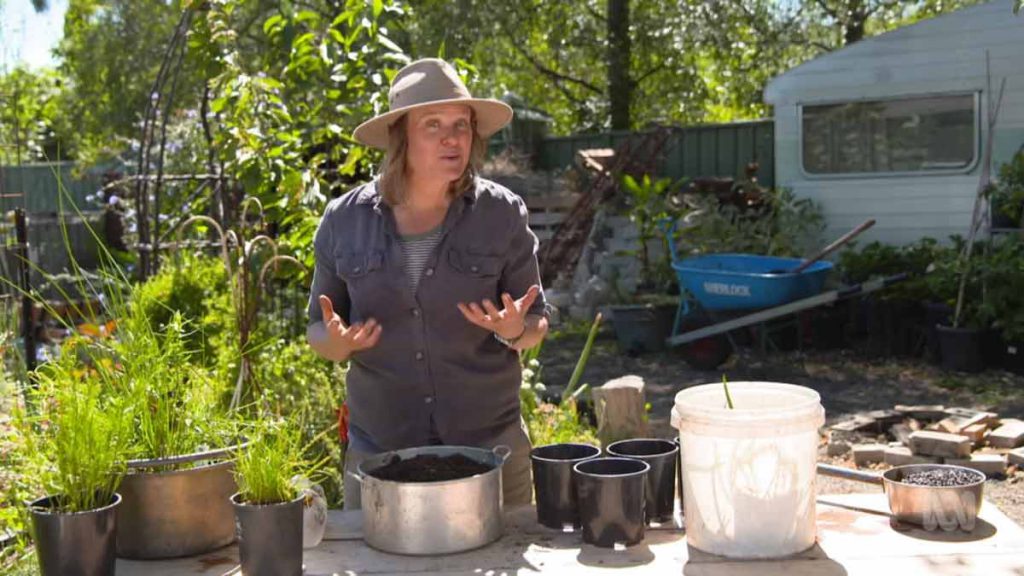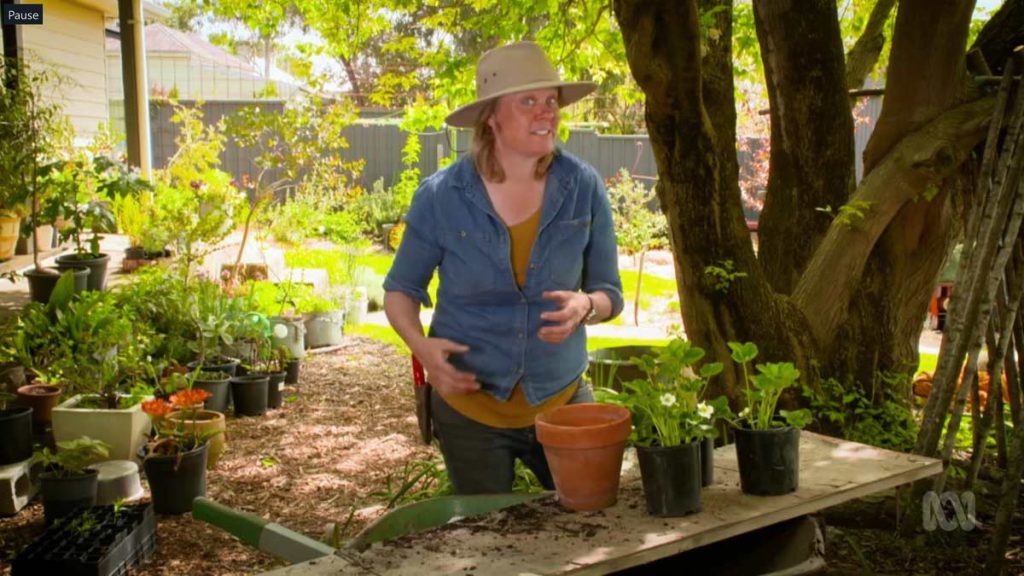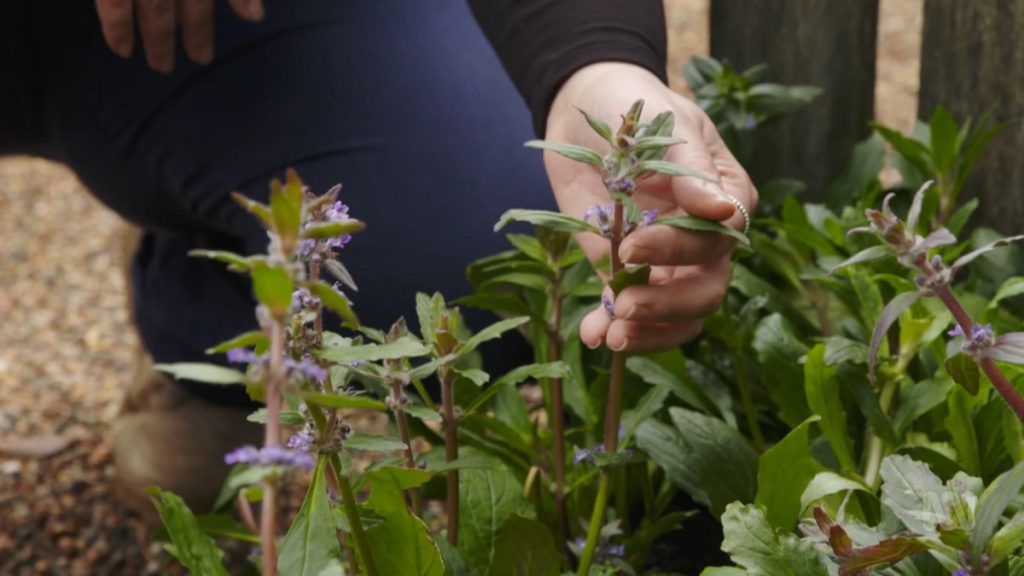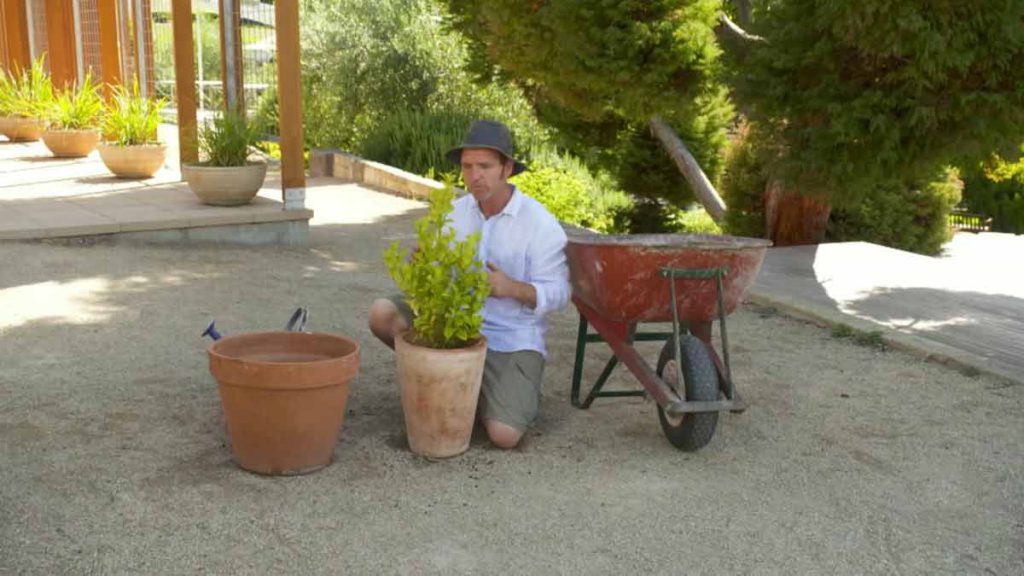Gardening Australia episode 13 2021: Millie Ross creates a water feature, Tino Carnevale visits an outdoor climate classroom, Sophie Thomson tours a lavender farm, and Jane Edmanson explores a cleverly designed inner-city space.
Gardening Australia has always provided practical, trustworthy and credible gardening advice to inspire and entertain. Inspiring, entertaining and full of practical advice, join Costa Georgiadis and the team as they unearth gardening ideas, meet avid gardeners and look at some of the most inspiring gardens from across the country.
Gardening Australia episode 13 2021
Arid Garden, Melbourne
As the Royal Botanic Gardens Victoria celebrates its 175th birthday in 2021, Costa visits the Melbourne gardens to learn about the new Arid plant collection. The Royal Botanic Gardens, Melbourne was established in 1846 by then Lieutenant Governor Charles La Trobe, and the gardens have been the centre of horticultural science, conservation research and garden inspiration ever since. The collections in the garden have grown and changed over the years, but the principal behind the gardens has remained the same – connecting people with plants.
A key role of the Gardens is looking to the future, and the new Arid Garden plant collection is an example of this. The Arid Collection is an assortment of cacti, aloes, succulents, agaves, bromeliads and more that have unique adaptions to arid conditions. With the RBG Melbourne at the international forefront of Landscape Succession Planning and future-proofing for climate change, this collection is of plants is especially important for the garden, and the gardeners that visit to draw inspiration from the plantings they see.
“The general public became really interested in this suite of plants during the millennium drought” says Andrew Laidlaw, Landscape Architect from the RBG “and we see that interest and love steadily increasing still”.
FAQs – Pine needles and soil | Autumn leaves | Avoiding fruit fly
Josh dispels some myths about pine needles, Sophie explains why leaves change colour in autumn and Jerry shares tips on how to avoid fruit fly.
Small Space Simplicity – Gardening Australia episode 13 2021
Jane shows how smart garden design can enhance even the smallest of inner-city spaces. The Victorian-era terraced houses only have a narrow frontage with very little space for a garden, but the layout here maximises the available space very cleverly to create three separate garden areas: the front garden with a cottage feel; a lightwell alongside the house; a rear courtyard.
At the back the garden space flows from the kitchen and centres on an outside dining area. Pots of red-flowering begonia sit on stands and bring colour for many months. A crepe myrtle is the main tree at the back and only needs pruning once a year; it brings interesting bark, colourful leaves, flowers in late summer and shade.
More summer shade comes from a climbing black edible currant vie, which has been trained to extend the height of the fence, offering privacy as well as allowing through the winter light after the leaves have dropped. It links to a grapevine over the rear pergola and creates a snug enclosed feeling.
The side lightwell is highlighted by hanging plants, more begonias for colour and mirrors to maximise the light and give the illusion of more space.
Just Add Water
Millie turns an old bathtub into a vibrant water feature – that even includes some native fish! Millie uses indigenous plants in her pond – it’s important to think about what you grow in a water feature as birds can easily transport seeds or bits of plants to other waterways, where they can cause a major problem.
Some plants grow on the edges of waters; these are marginal plants, such as reeds and sedges. Others need to be fully submerged – these are the aquatic plants. Millie will grow her plants in pots rather than filling the base of the bath with soil.
For both marginal and aquatic plants, you need a growing medium that is heavier than regular potting mix, as this will simply float and it contains a lot of nutrients, which can cause unwanted algae to grow. Millie pots her seedlings up in a special aquatic mix but you can also use a heavy clay-loam mix from your garden if you’re confident it is fairly weed-free.
To hold the growing mix in place, cover it with a layer of washed sand then a layer of gravel. Gently lower the pots into the water to allow any air to escape. The pots of aquatic plants can sit on the bottom of the bath, while the marginal plants should be raised up on bricks or upturned pots so that only the roots are under water and the foliage sits above.
Climate Class – Gardening Australia episode 13 2021
Tino visits a school that has adopted a citizen-science project to monitor how its local flora and fauna are adapting to climate change. Tino goes back to school to meet a group of students who are learning about the natural world through a citizen-science project that monitors locals flora and fauna. Taroona High School in southern Hobart is home to Tasmania’s first climate watch trail where students can track climate change data.
The trail covers a diverse range of habitats along the foreshore and nearby bush, and daily trips are made to look for signs of seasonal changes – new flowers or buds, fruiting, animals species – which are then logged and uploaded to a central data base. Student leader Mackenna Minstrell explains that these small, localised observations can then be fed into a national and then global set of data and used to detect any big-picture changes in the environment.
As climate change affects temperature and rainfall, this helps map how local flora and fauna are responding. It offers a chance for students to become familiar with the plants and animals living in their area, working in well with their science program, and providing an active outlet for those concerned about the future of our planet.
Scent-Sational
Sophie tours a lavender farm to see what species are growing, enjoy the divine scent, and learn which types are best used in cooking. The farm is on an elevated site in the picturesque Hoffnungsthal Valley, famous for its vineyards. The sloping land works well because lavender needs good drainage and a slightly alkaline soil. From the hundreds that exist around the world, Lyndoch grows about 70 varieties.
The main type grown is English lavender, which has the sweetest scent with none of the camphor notes other varieties have; for this reason, it is the only one that is used in cooking.
Potted Herbs – Gardening Australia episode 13 2021
Josh refreshes a pot of mixed herbs to separate off his exuberant horseradish and add some new flavours. Josh has a large pot of mixed herbs that he keeps close to the kitchen has become a bit full so he is giving it an update. The horseradish is swamping all the other plants, so he pulls everything out and starts again.
A perennial member of the Brassicaceae family, Horseradish is grown as a root vegetable; the long roots are grated and used as a spice and condiment. It’s dead easy to grow in a home garden, but it has a tendency to take over, so caution should be exercised when planting it into a garden bed.
Growing Local
Clarence meets a native plant aficionado who loves his local flora so much he’s turned his backyard into a nursery. Clarence meets a plantsman who loves the local flora around Sydney so much he has converted his backyard into a nursery! Daniel Smart specialises in growing plants from one of NSW most populated places – the Cumberland Plains west of Sydney – so they can be used to revegetate areas where they’ve been lost.
Of the hundreds of species he grows, some are quite rare and are close to extinction. Others would make great garden specimens, such as Australian bugle, a spreading groundcover whose blue flowers attract blue-banded bees. Grasses such as Wiry Panic provide good food for finches and to provide nesting material.
Some plants are salvaged from development sites, such as a local greenhood orchid he collected. He visits about 7 council areas and collects material to propagate for return to parks and reserves. His own garden includes a Blue Box that is nearly 400 years old!
My Garden Path – Jian Liu
We meet Jian Liu – a young lawyer who, in just two years, has transformed her suburban garden into a self-sufficient productive patch.




